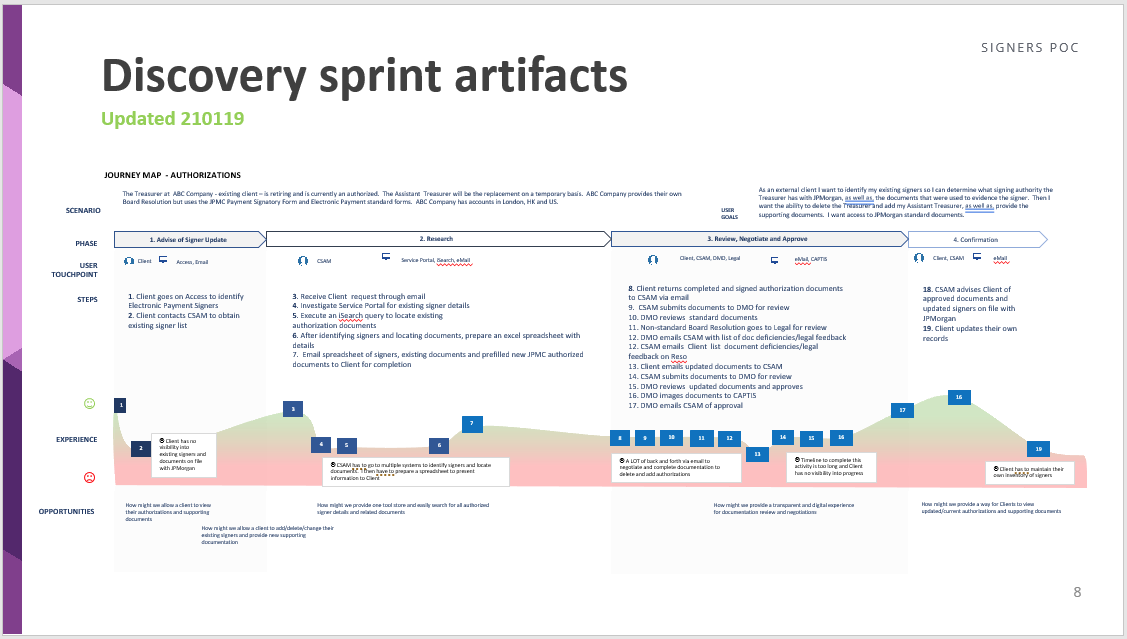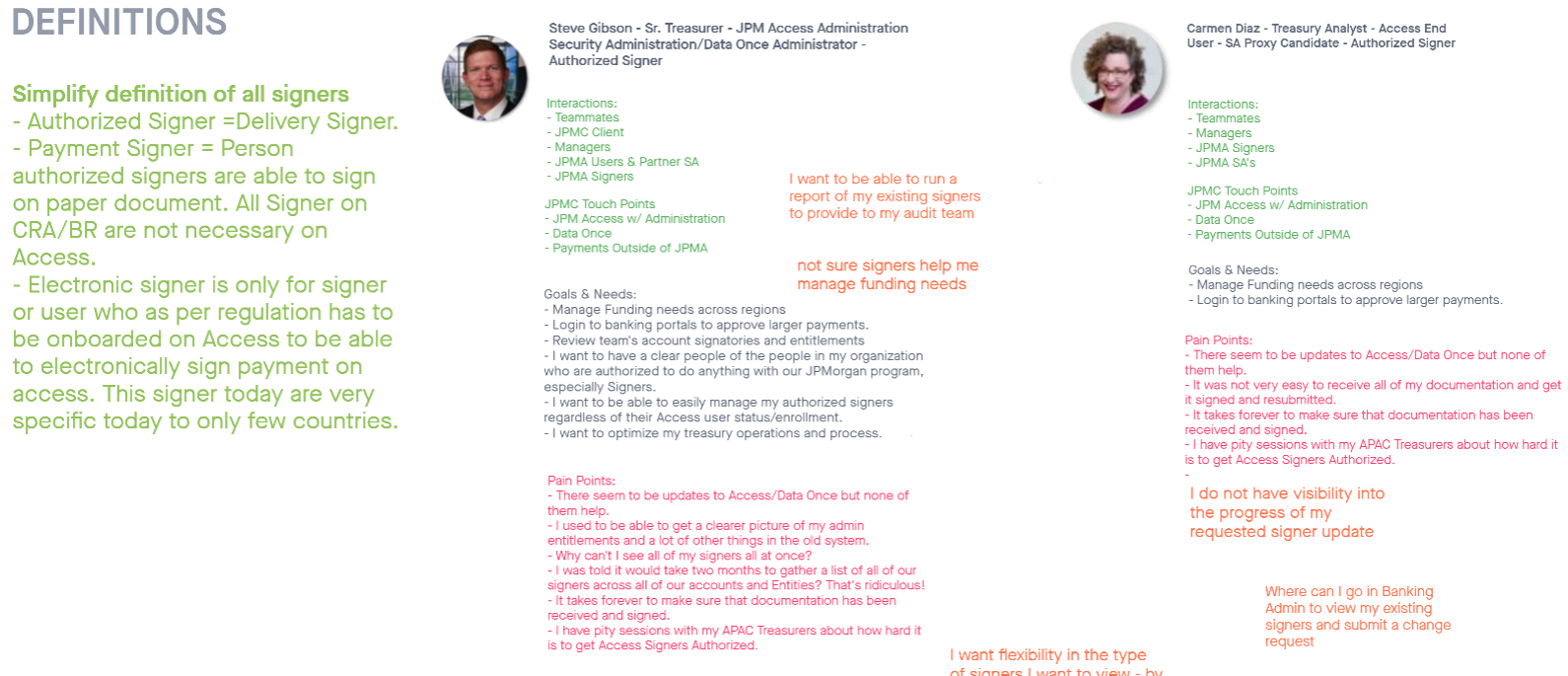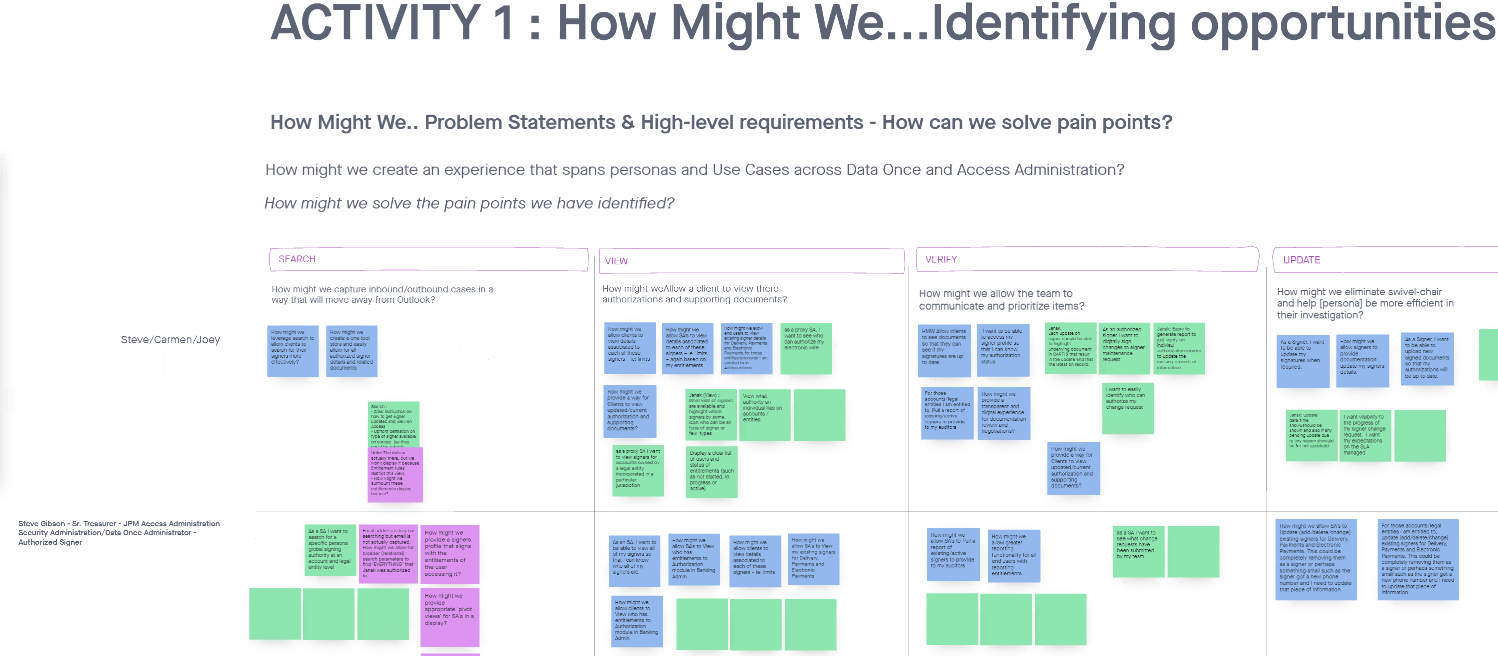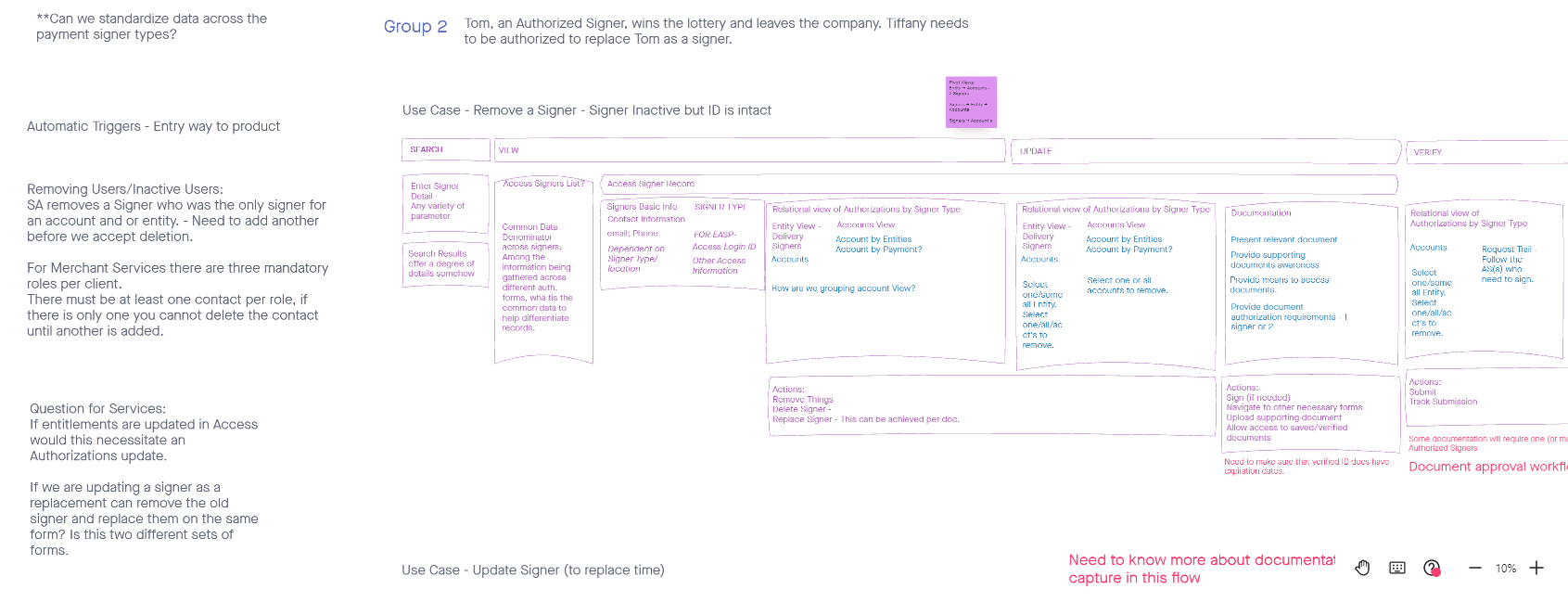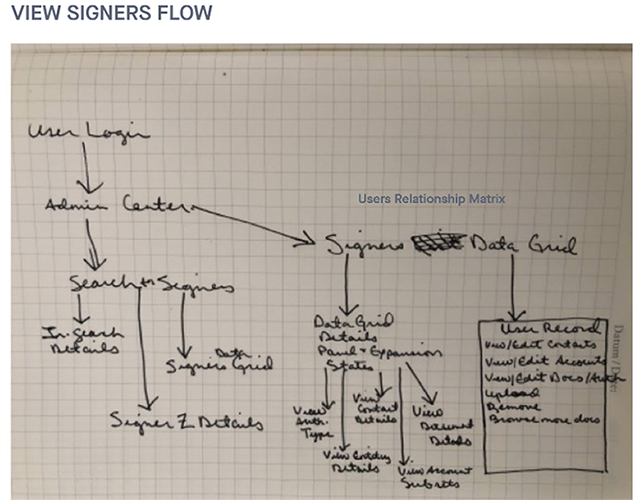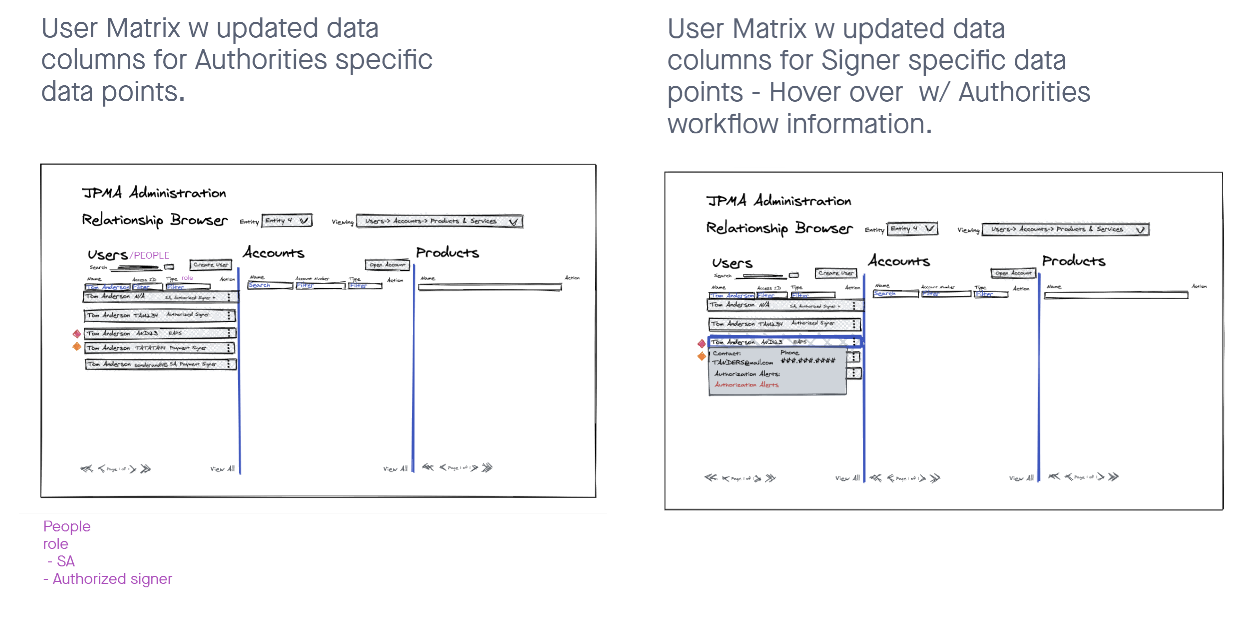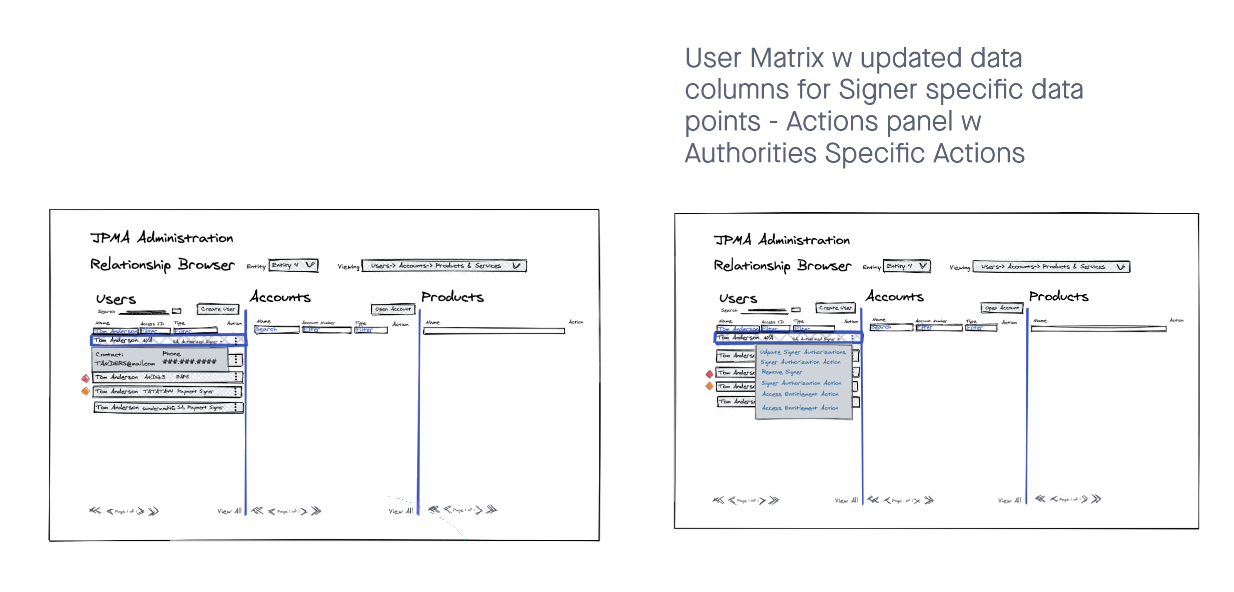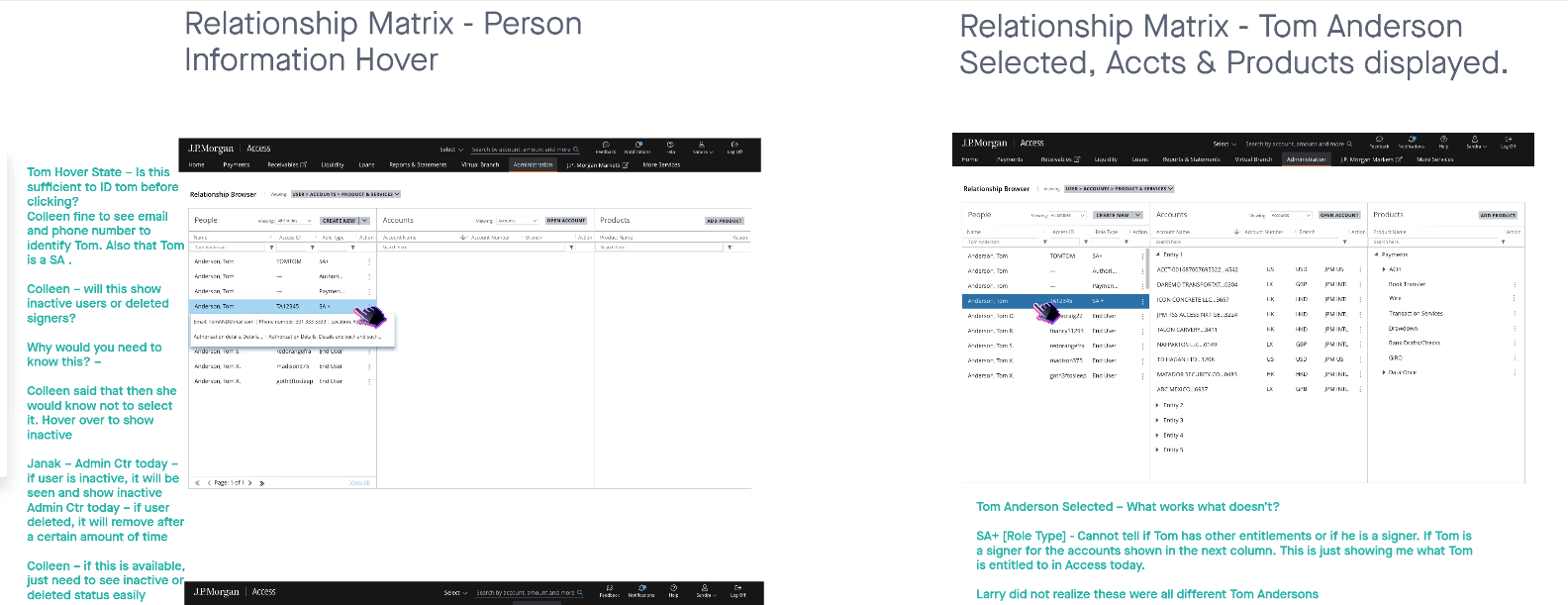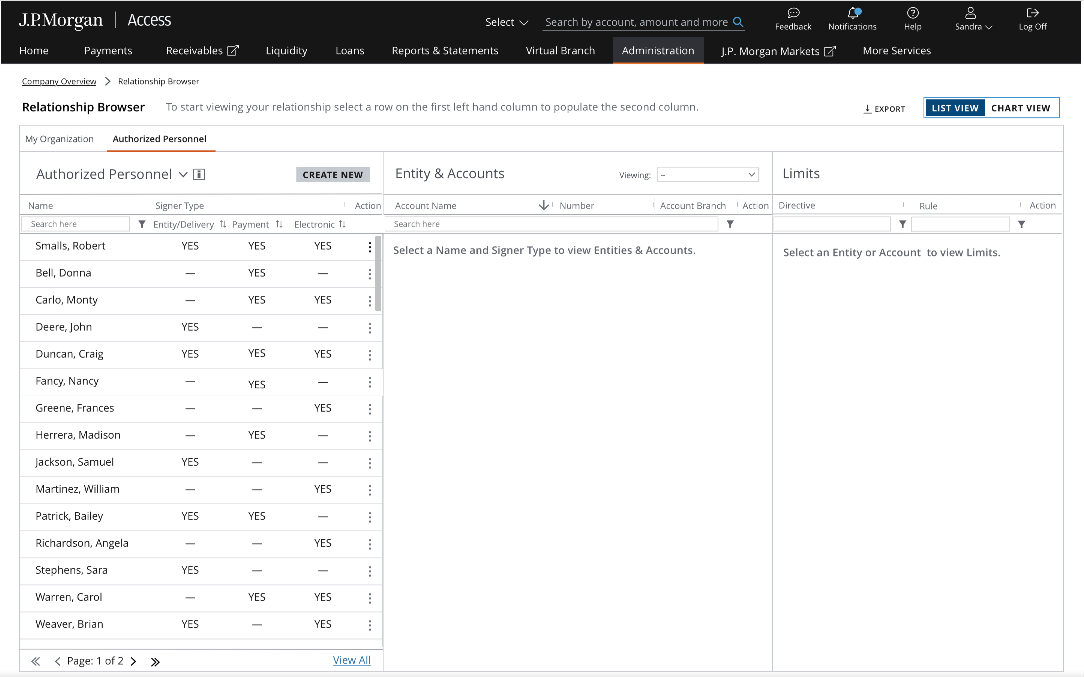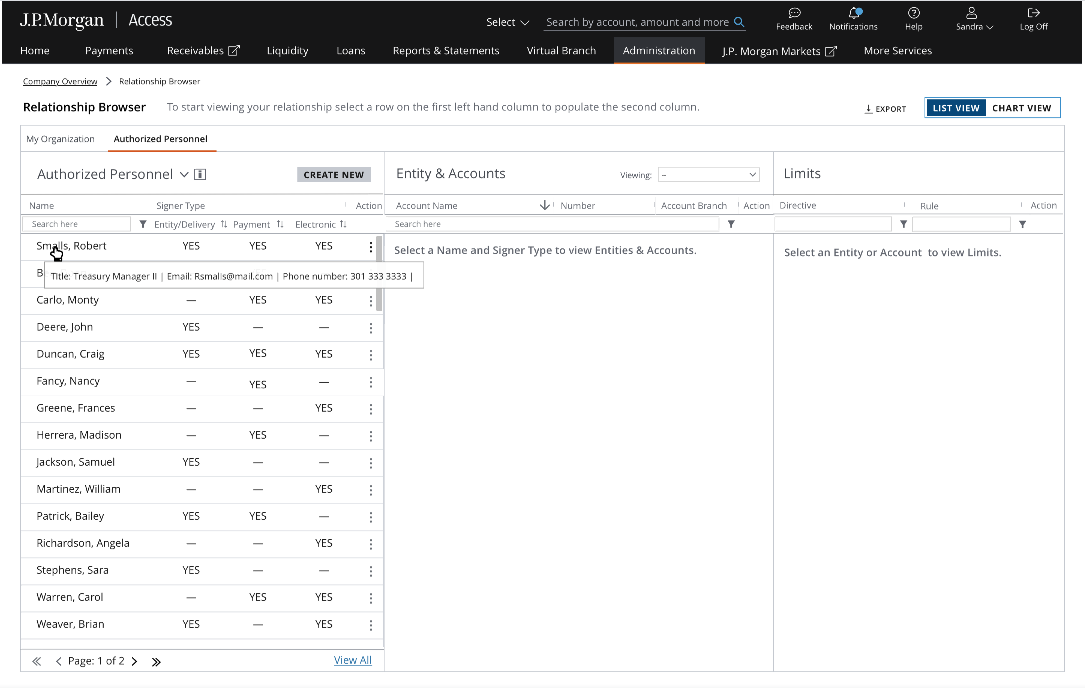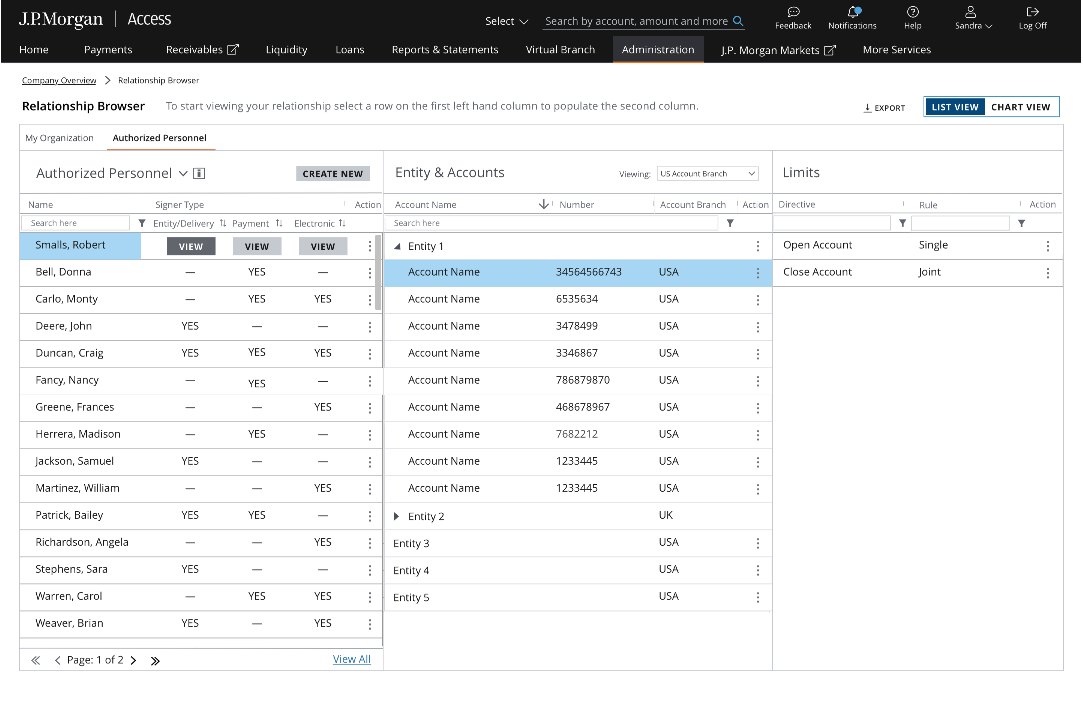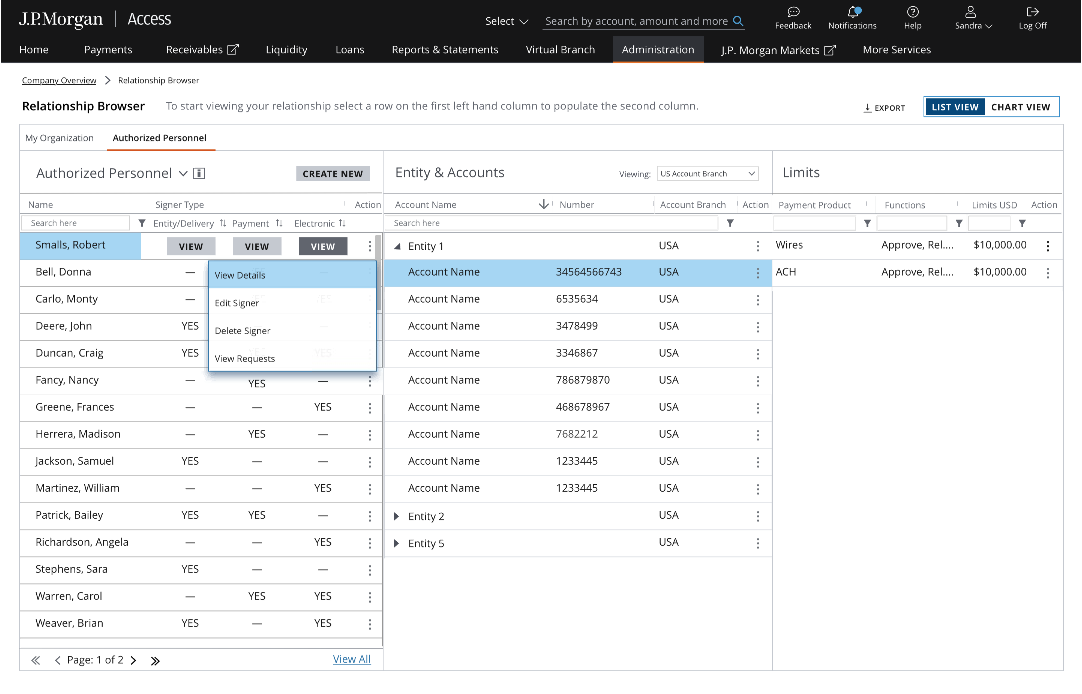JPMorgan Chase CIB
Authorized Signers Visibility Proof of Concept
Overview: The Authorized Signers Challenge
JPMorgan Chase clients faced significant delays, up to a month, in getting a complete picture of their authorized signers and updating privileges. These "Authorized Signers" perform critical actions, from opening accounts to changing spending limits, making efficient management crucial.
In Q1 2021, our Operations Product and Design teams launched a Proof of Concept (POC) to enable clients to view and eventually edit Signers directly within JPMorgan Access. This initiative aimed to integrate internal Customer Service Operations with client self-servicing tools, transforming a major pain point into a seamless digital experience for Access user and client service workers.
Key Challenges:
- Reduce lead time for signer information and updates.
- Enable efficient updates to signer rosters and privileges.
- Provide clear client visibility into signer types, accounts, and authorizations.
- Improve operational efficiency by eliminating manual processes.
Project Goals:
- Allow clients to view and edit Signers within Access.
- Offer a concise list of authorized signers with key details.
- Enhance Customer Satisfaction (CSAT) and operational efficiency.
- Integrate internal operations with client self-servicing tools.
Process: Orchestrating the Design Sprint
As Lead Designer, I partnered with the Product Owner to execute a comprehensive Design Sprint addressing the Authorized Signer visibility issue. I presented a detailed 13-week engagement plan, mapping out discovery, define, concept, design, usability testing, and handoff phases.
Our multidisciplinary team included a Product Owner, Product Manager, Tech Director, UX Team Manager, 10 Client Service Workers (for critical insights), and a UX Teammate for facilitation support. This project was pivotal for JPMC's digital transformation, requiring me to educate and guide stakeholders unfamiliar with UX practices, ensuring their active participation and buy-in.
Discovery: Uncovering the Problem Space
I initiated Discovery by having the Product Owner complete a Creative Brief, crucial for understanding the current product problem, pain points, and desired outcomes. This ensured deep alignment from the start.
I also guided the Product Owner in creating a Current State Map, meticulously outlining the authorizations use case, including players, systems, actions, user experience (satisfaction/pain), and opportunities for improvement. This provided a comprehensive view of the existing challenges.
Concept Sprint: Collaborative Ideation
I hosted the Concept Sprint with a diverse team of 10 partners, including client service workers. After InVision Freehand and sketching tutorials, we reviewed the current journey, translating pain points into opportunities mapped to our key personas.
We collaboratively aligned on opportunities along an ideal journey. A "Blue Sky" exercise revealed critical insights into screen content for tasks like removing a Signer. Participants then used Crazy 8’s to illustrate their ideal state visions, fostering diverse solutions.
The Crazy 8’s exercise led to a core use case narrative: "As a user, I should be able to access a concise list of my authorized signers and understand which accounts they are authorized to act on and which actions they have authority to take." This self-servicing capability would revolutionize the client experience, representing a major win for JPMC.
Design & Prototyping
Following the Concept Sprint, I rapidly iterated on a process flow and initial designs, leveraging an existing dashboard and relationship browser pattern that I helped our team develop. My sketches focused on efficient display of user and authorization data, assuming common inquiries about user names or authorization dates.
I also explored actions at the "people" level of the browser, always considering the broader Client Self-Servicing vision. After internal reviews for feedback and alignment, I elevated the design fidelity using our Design Pattern library and drafted a Usability Script.
My product partner recruited internal Service Workers from the US, EMEA, and Hong Kong for two rounds of usability testing. Initial feedback challenged my hypothesis: users needed to see all three bank signer designations and their status for each user, requiring a comprehensive display of all signer types.
Outcomes & Learnings
The final UI design was rigorously tested with our large client, Marathon, marking a pivotal moment after two years of product renovation. The user's "gasp" upon seeing all signer designations, accounts, limits, and authorizations on one screen confirmed our success: we solved one of the firm's most pressing client issues.
This solution dramatically improved client visibility and self-service, reducing the time to get a full picture of signers and update privileges from **weeks/months to minutes**, saving the firm approximately $2 million in Operations costs. My work not only validated our department's relevance but also increased buy-in for further design transformation.
Key Takeaways:
- **Revolutionized Client Self-Service:** Reduced signer information and update times from weeks/months to minutes, saving $2M in operational costs.
- **Enhanced Client Visibility:** Provided a comprehensive, single-screen view of signer designations, accounts, limits, and authorizations.
- **Strategic Problem Solving:** Successfully addressed a long-standing, complex client pain point, transforming an inefficient manual process into a seamless digital experience.
- **Cross-functional Leadership:** Guided a multidisciplinary team through a comprehensive Design Sprint, fostering collaboration and educating stakeholders on UX best practices.
- **Impactful Design Validation:** Rigorous usability testing with key clients confirmed the solution's effectiveness and user satisfaction.
- **Increased Organizational Buy-in:** Demonstrated the value of UX design, leading to greater support for future digital transformation initiatives within JPMC.
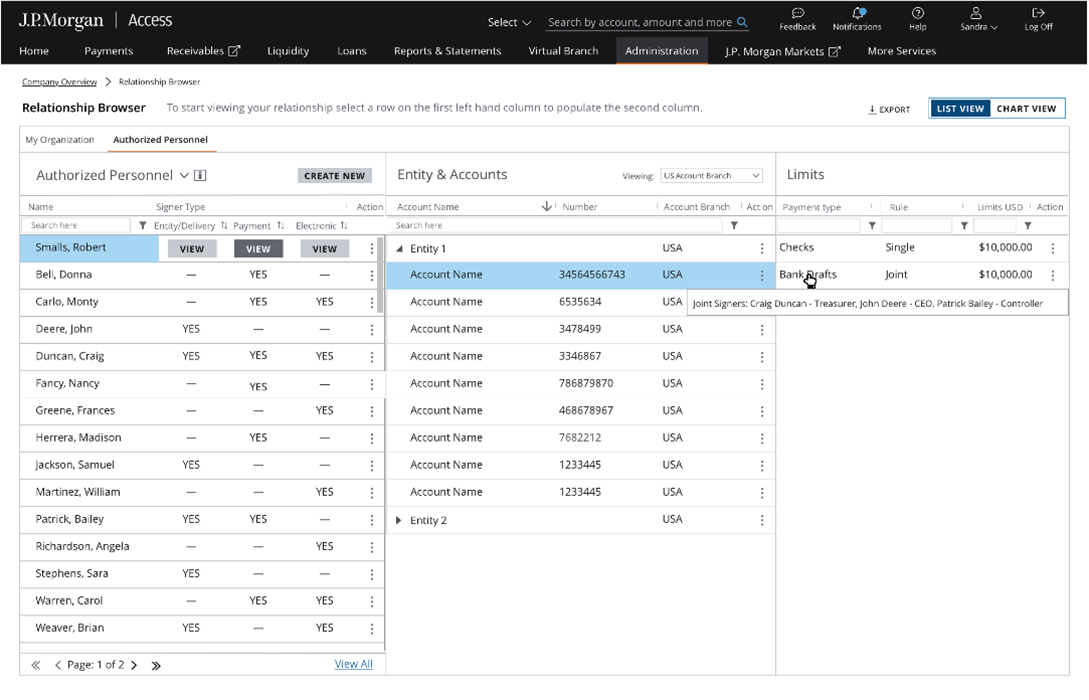
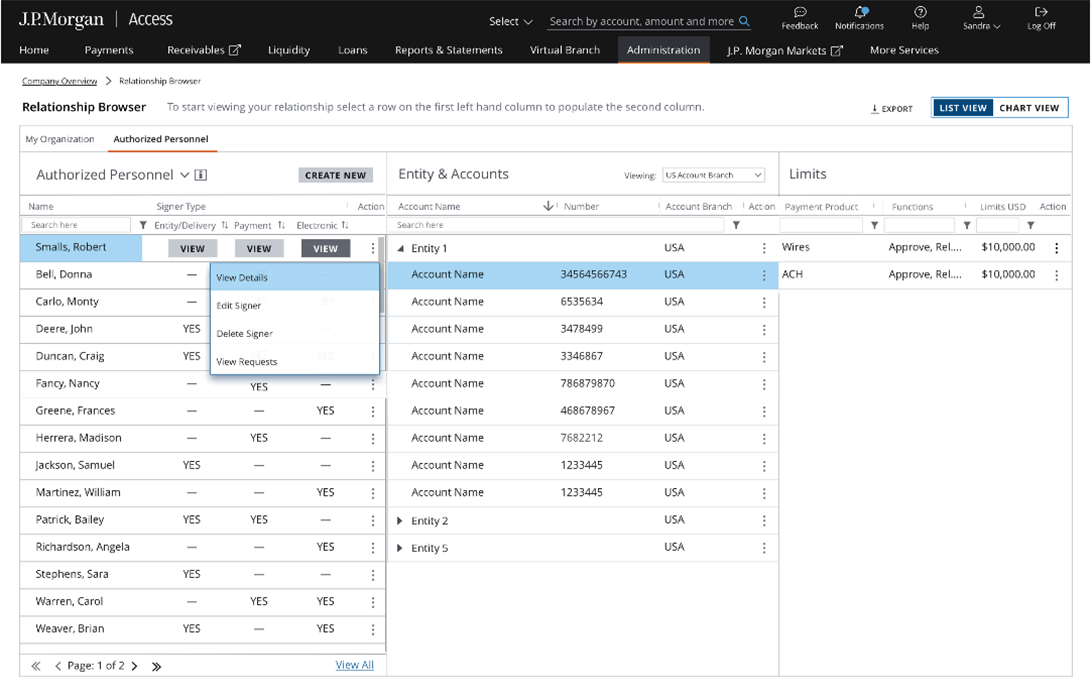
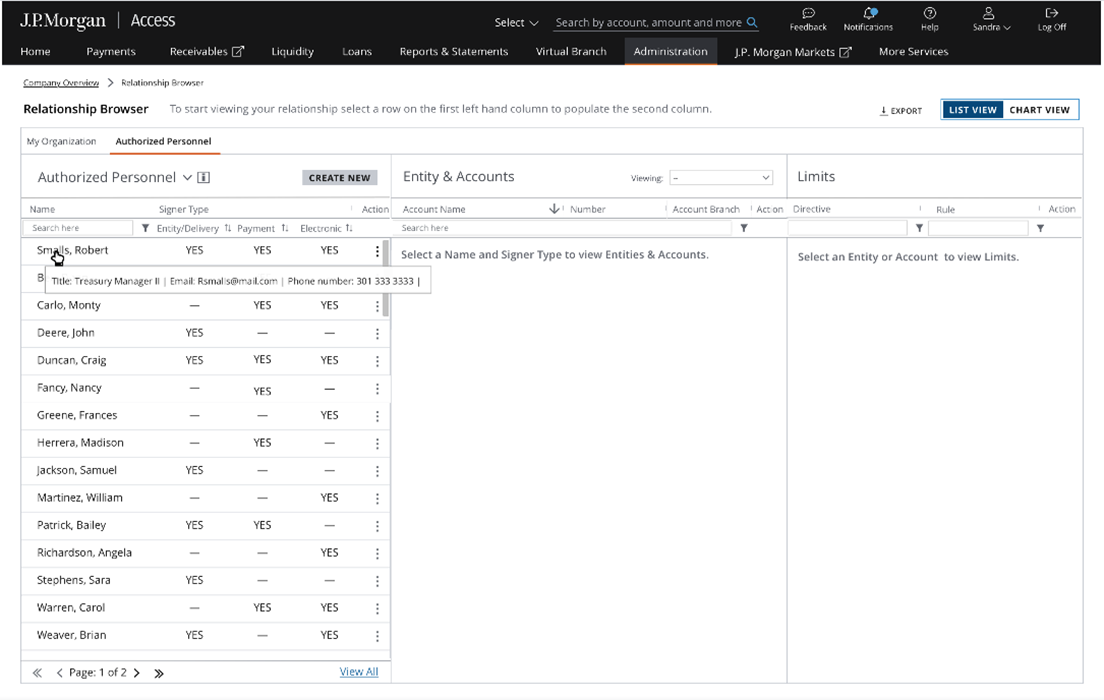
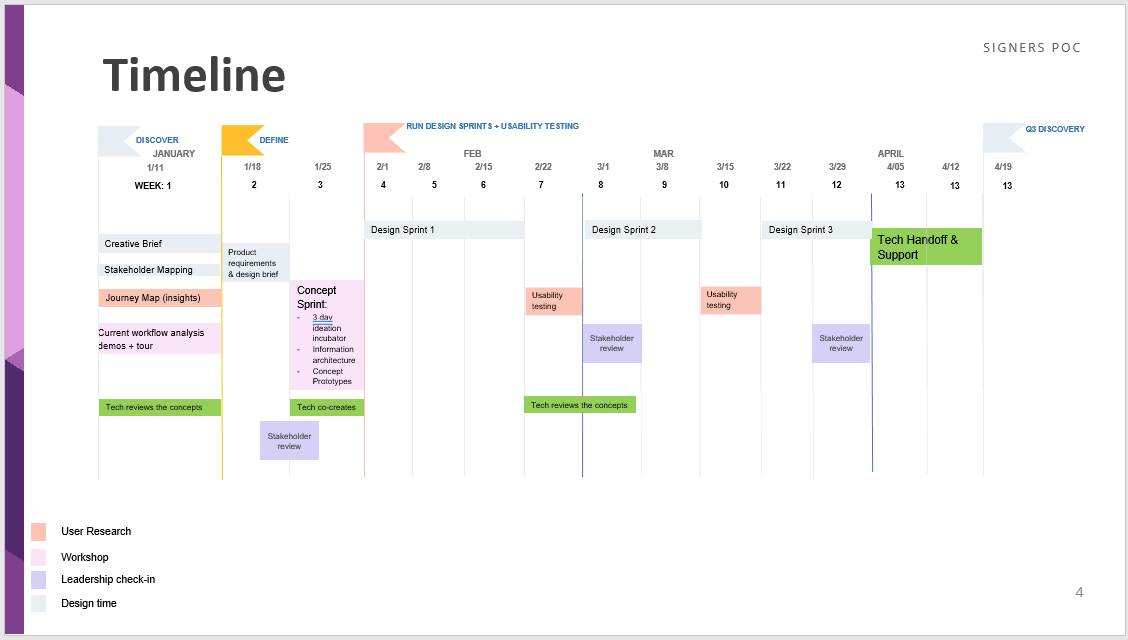
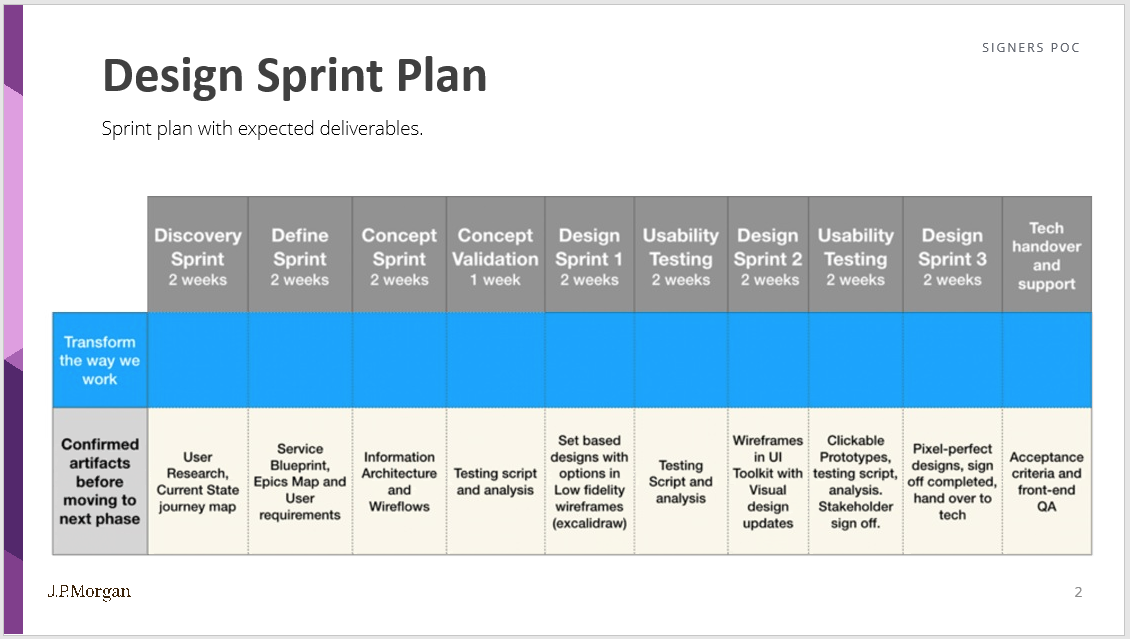
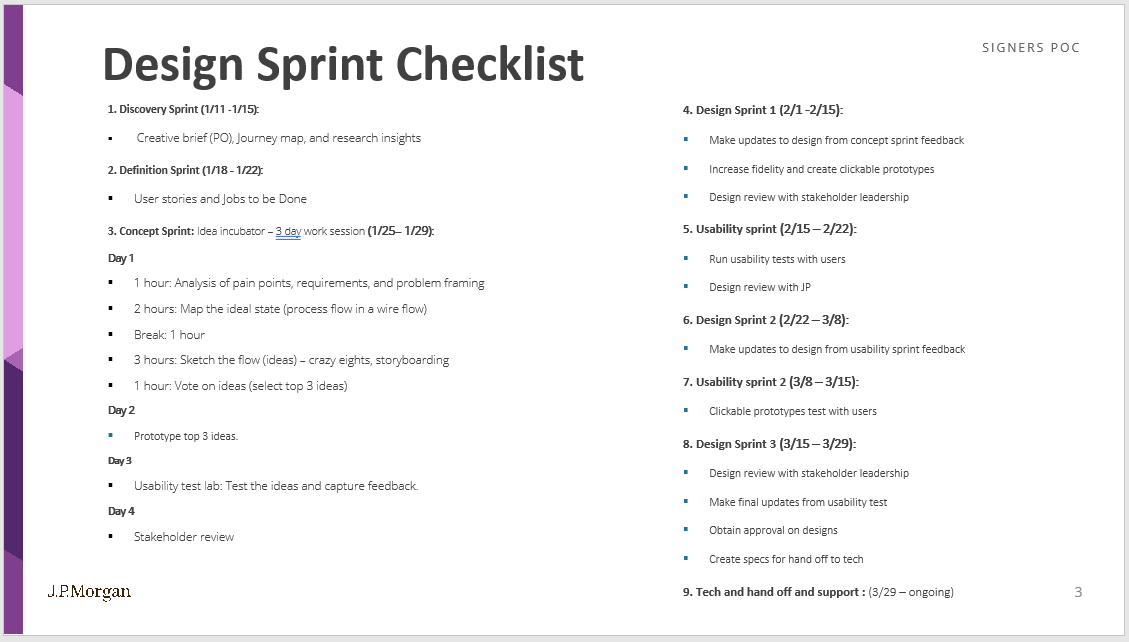
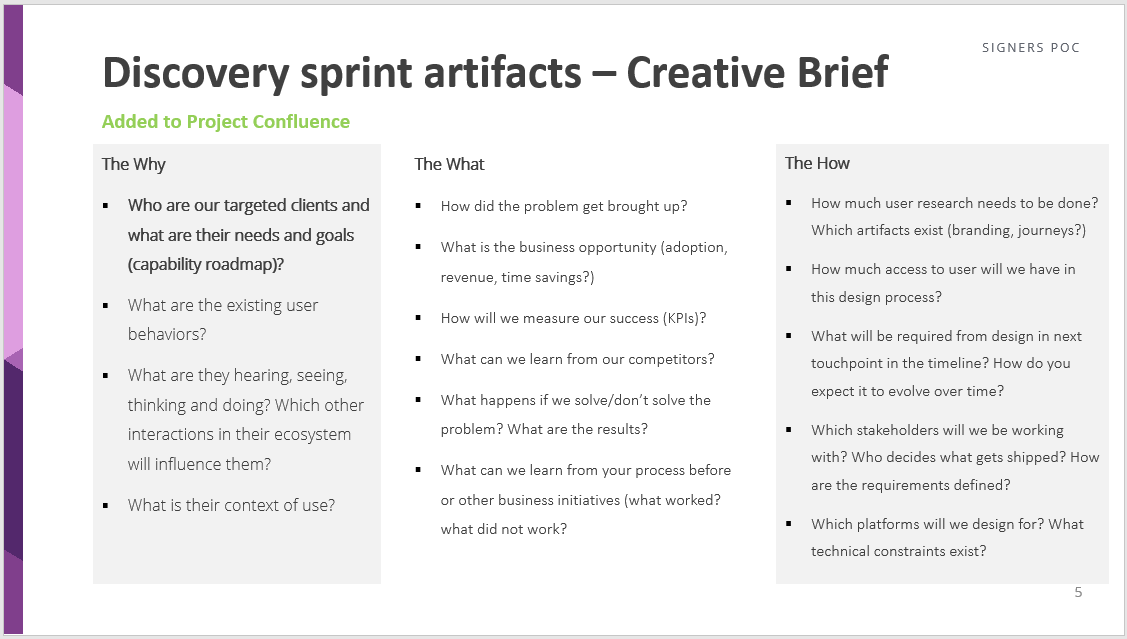
.png)
